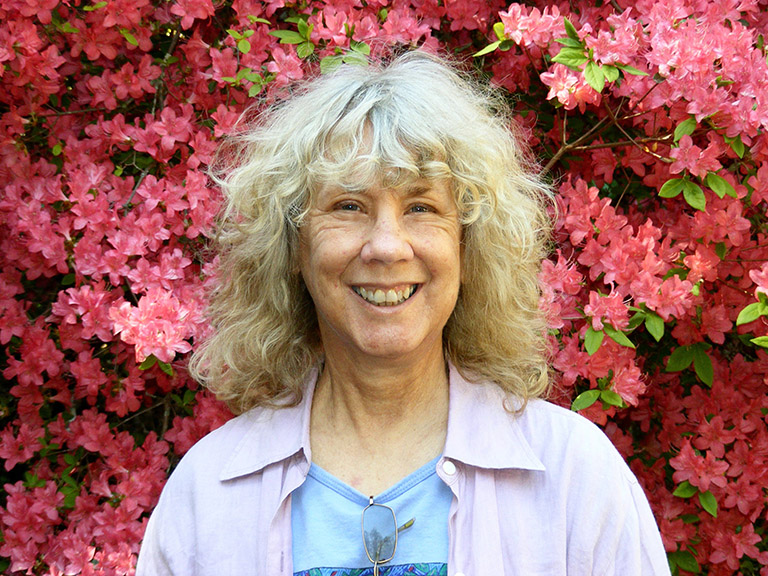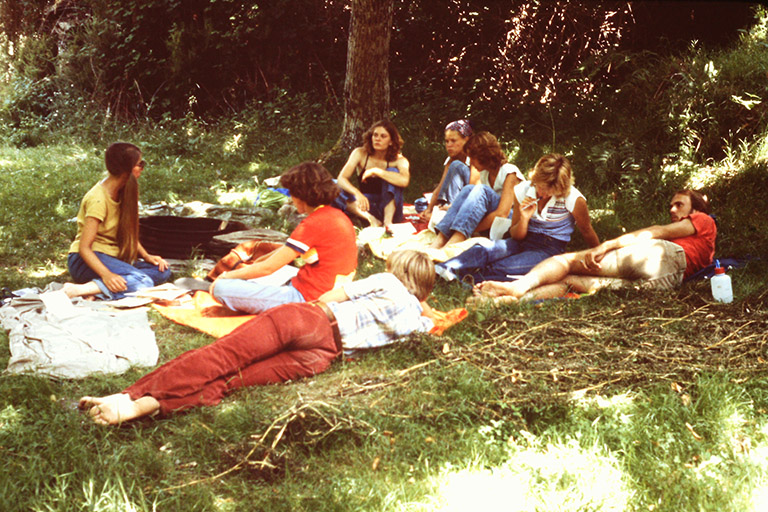Back in the United States after the second pilgrimage iteration in 1979, and with her dissertation behind her, Davidson worked on helping create a loose network of support for Santiago pilgrims and would-be pilgrims. She and Maryjane Dunn, who had walked with them that year, created the Bulletin for Friends of the Road to Santiago. For fifteen years the journal published information about the pilgrimage and brief studies, their own and those of the increasing number of scholars with an interest in pilgrimage. Those years following Franco's death saw the burgeoning of interest in trekking, the environment, and in contrasting Spain's "true" history with the "mythical" history promulgated by the dictatorship. Padre Vicente Valiñas had begun to paint today's familiar yellow arrows. Church and lay groups, both in Spain and internationally, had begun to sponsor hostels. Davidson and Dunn were active resource people for many of those efforts. The first "pilgrim passports" for North American pilgrims, designed to be stamped in each town along the route and presented in Compostela to receive the Church's Certificate of Pilgrimage, were created, produced, and mailed out from Davidson's kitchen.
During those years while Davidson and Dunn were helping to husband the development and formalization of the route, they simultaneously worked to help muster the intellectual resources to support study of the Santiago Pilgrimage. In 1993 their Pilgrimage in the Middle Ages: A Research Guide (Garland) was published. The following year their The Pilgrimage to Santiago de Compostela: A Comprehensive Annotated Bibliography (Garland) came out. One Spanish review grudgingly acknowledged that even though it was produced by two foreigners, and women at that, bibliographers in Spain would do well to use it as a model. By the late 1990s some of the best recent scholarly studies on the Camino found outlet in Davidson and Dunn's edited compendium, The Pilgrimage to Compostela in the Middle Ages: A Book of Essays (Garland, 1996, paperback edition in 2000). The end of the decade saw their The Miracles of Saint James: Translations From the "Liber sancti Jacobi" (Italica), in collaboration with the Latinist Thomas Coffey. From the late '80s and early '00s both the diocese of Compostela and Spain's Ministry of Tourism, each eager to help shape the development of the Camino de Santiago for its own purposes, invited both Davidson and Gitlitz, as pioneers and sustainers, to participate as consultants.
Davidson was gifted at collaboration, and she wrote four additional books with Gitlitz. She brought to their collaboration insights and tools from anthropology, philology, history, and literature, as well as her fluent reading knowledge of several languages and her bibliographic, editing, and detective skills. Much of their later collaborative work took on the larger contexts of pilgrimage. ABC-Clio asked Davidson to put together an encyclopedia of pilgrimage-related subjects, and she enlisted Gitlitz to help in what eventually became the two oversize volumes of Pilgrimage: From the Ganges to Graceland, which in 2002 was selected by the American Library Association as a "Best Reference Source." It was followed in 2006 by Pilgrimage and the Jews (Praeger). The pair also collaborated (and each gained 20 pounds) on a cookbook, A Drizzle of Honey: The Lives and Recipes of Spain's Secret Jews (St. Martin's, 1999) which garnered both a National Jewish Book Award and the International Association of Culinary Professionals' Award for Distinguished Scholarship.
IU's Department of Spanish and Portuguese can take pride in its alumna Linda Davidson, joining Santiago de Compostela's journal Ad Liminum in thanking Linda for being a "pioneer in a nascent field" and for helping "to produce and incubate a generation of critical studies on the Camino de Santiago and then on world pilgrimage.".


 The College of Arts
The College of Arts